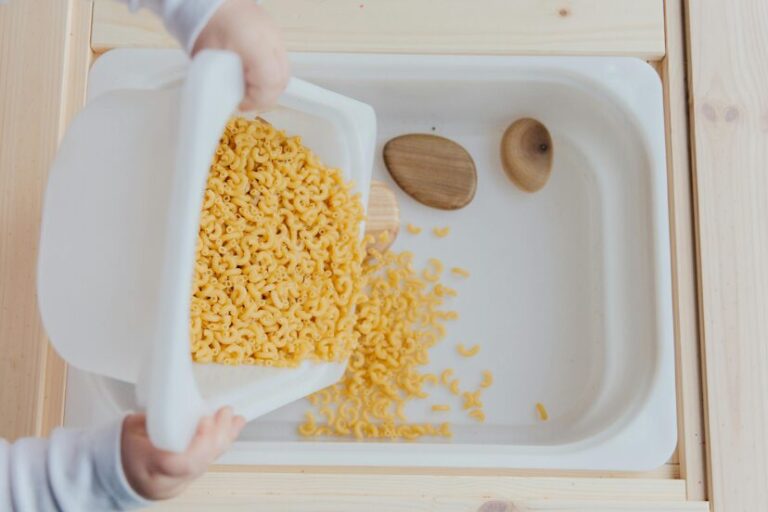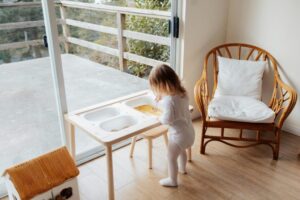Sensory bins are open containers filled with engaging materials—like sand, rice, water beads, or themed fillers—designed for tactile exploration, regulation, and developmental play. They benefit everyone, from toddlers to adults, by supporting fine motor skills, sensory regulation, creativity, and focus.
Why Sensory Bins Work
- Multi-sensory engagement: Tactile, visual, and sometimes auditory or olfactory input enrich the experience.
- Builds fine motor & cognitive skills: Activities like scooping, sorting, and pouring support dexterity, coordination, and academic development.
- Supports regulation & mindfulness: Immersive play improves sustained focus and encourages calm.
- Encourages communication & creativity: Themed bins spark imaginative play and social interaction.
Types of Sensory Bins
- Dry bins: Fill with rice, beans, kinetic sand, pom-poms, or pasta.
- Water bins: Use water beads, sponges, floating toys, or soapy textures.
- Themed bins: Create scenes—like ocean, construction, or garden—with matching fillers and miniature toys.
- ASMR bins: Include beads, foil paper, or crinkly textures for enhanced sensory feedback.
Top Sensory Bin Picks
⭐ Segmented Sensory Bin
Best for: Multi-fillers and sensory exploration
Includes multiple sections for different filler types in a single container—great for quick setup. Convenient lid keeps things tidy.
🌟 Outer Space Sensory Bin Kit
Best for: Tactile play and sensory feedback
Galaxy themed ready-to-go sensory bin with space rocks, aliens, tools, and glow in the dark stars.
🧠 Light-Up Sensory Bin
Best for: Visual learners and calming visuals
This sensory kit includes a LED-lit bin to provide mood lighting that enhances themed play or relaxation.
Pair Sensory Bins With These Tools
- Sensory Sand – mix textures for layered play
- Sensory Pillows – offer comfort during slow, focused play
- Sensory Lamps – combine mood lighting with bin exploration
When & Why to Use Sensory Bins
| Time | Why Sensory Bins Help |
|---|---|
| Learning letters & numbers | Explore shapes and sorting through tactile play |
| Calm-down periods | Engaging textures help reduce anxiety |
| Group time | Fosters sharing, taking turns, and social language |
| Sensory seeking behaviors | Offers safe, structured sensory input |
Activity Ideas
- Scavenger hunt: Hide letter or number toys for identification practice.
- Theme days: Create bins around seasons, holidays, or favorite topics.
- Language building: Talk about colors, textures, and objects during play.
Frequently Asked Questions
Are sensory bins safe for toddlers?
Yes, with supervision and age-appropriate, non-chokable materials. Always adapt bins to the user’s abilities.
How often should sensory bins be used?
Frequent, short sessions are ideal—just 10 to 15 minutes a day can provide benefits.
Can adults benefit from sensory bins?
Absolutely. Sensory bins can be used as calming tools, mindfulness activities, or creative breaks in work environments.
As an Amazon Associate, SensoryGift.com earns from qualifying purchases—thank you for supporting inclusive sensory tools!



